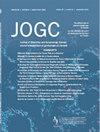Association of Acute Histological Chorioamnionitis and Other Placental Lesions With Subsequent Pregnancy Outcomes After Spontaneous Preterm Birth
IF 2
Q2 OBSTETRICS & GYNECOLOGY
引用次数: 0
Abstract
Objectives
Acute histological chorioamnionitis (HCA) is detected in over 50% of spontaneous preterm birth (PTB) and is associated with worse neonatal prognosis. We aim to investigate whether the presence of HCA impacts subsequent pregnancy outcomes.
Methods
This retrospective cohort study included deliveries at a tertiary centre from 2014 to 2020. Participants were individuals with a history of spontaneous PTB or pregnancy loss >160 weeks and available placental pathology (index pregnancy) with a subsequent pregnancy followed at the same institution. Placentas were classified according to the presence of HCA, other placental lesions, or no lesions. Subsequent pregnancy outcomes were analyzed. The primary outcome was the rate of overall and spontaneous PTB (<370 weeks) in the subsequent pregnancy.
Results
A total of 292 individuals met the study criteria, of which 133 had HCA, 61 had other placental lesions, and 98 had no lesions. Individuals with HCA in the index delivery had a higher risk of PTB <280 weeks in the subsequent pregnancy, compared to the no-lesion group (10.4% vs. 1.0%, P = 0.004). Rates of PTB >280 weeks did not significantly differ. The risk of neonatal adverse composite outcomes was higher in the HCA group (13.9% vs. 4.2%, P < 0.01). In a subanalysis of different placental lesions at the index PTB, only maternal vascular malperfusion was associated with recurrent PTB (adjusted odds ratio 2.57, P = 0.01).
Conclusions
PTB with HCA is associated with higher rates of extreme PTB and adverse neonatal outcomes in the subsequent pregnancy. The inclusion of placental pathology analysis may improve individualized risk assessment in future pregnancies.
急性组织学绒毛膜羊膜炎和其他胎盘病变与自然早产后妊娠结局的关系。
目的:急性组织学绒毛膜羊膜炎(HCA)在50%以上的自发性早产(PTB)中被检测到,并且与新生儿预后不良有关。我们的目的是调查 HCA 的存在是否会影响随后的妊娠结局:这项回顾性队列研究纳入了 2014 年至 2020 年在一家三级医疗中心的分娩情况。参与者为有自发性PTB病史或妊娠损失大于16周且有胎盘病理(指数妊娠)并在同一机构接受后续妊娠随访的个体。根据是否存在 HCA、其他胎盘病变或无病变对胎盘进行分类。对后续妊娠结果进行分析。主要结果是总体和自发性PTB的发生率(结果:共有 292 人符合研究标准,其中 133 人有 HCA,61 人有其他胎盘病变,98 人无病变。预产期为 28 周的 HCA 患儿发生 PTB 的风险较高,但无明显差异。HCA组发生新生儿不良综合结局的风险更高(13.9% vs 4.2%,P < 0.01)。在对指数PTB时不同胎盘病变的子分析中,只有母体血管灌注不良与复发性PTB相关(aOR 2.57,P = 0.01):结论:伴有HCA的PTB与较高的极端PTB发生率及后续妊娠的不良新生儿结局相关。纳入胎盘病理学分析可改善未来妊娠的个体化风险评估。
本文章由计算机程序翻译,如有差异,请以英文原文为准。
求助全文
约1分钟内获得全文
求助全文
来源期刊

Journal of obstetrics and gynaecology Canada
OBSTETRICS & GYNECOLOGY-
CiteScore
3.30
自引率
5.60%
发文量
302
审稿时长
32 days
期刊介绍:
Journal of Obstetrics and Gynaecology Canada (JOGC) is Canada"s peer-reviewed journal of obstetrics, gynaecology, and women"s health. Each monthly issue contains original research articles, reviews, case reports, commentaries, and editorials on all aspects of reproductive health. JOGC is the original publication source of evidence-based clinical guidelines, committee opinions, and policy statements that derive from standing or ad hoc committees of the Society of Obstetricians and Gynaecologists of Canada. JOGC is included in the National Library of Medicine"s MEDLINE database, and abstracts from JOGC are accessible on PubMed.
 求助内容:
求助内容: 应助结果提醒方式:
应助结果提醒方式:


